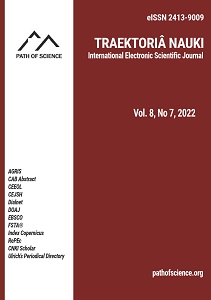Provenance Studies of Alluvial Tin Deposits in Parts of Ropp Younger Granite Complex, Northcentral Nigeria
Provenance Studies of Alluvial Tin Deposits in Parts of Ropp Younger Granite Complex, Northcentral Nigeria
Author(s): Aliyu Ibrahim Kankara, Mohammed Ibrahim Mustapha, Hamza Farouk, Terlumun AdagbaSubject(s): Energy and Environmental Studies
Published by: Altezoro, s. r. o. & Dialog
Keywords: fluvial environment; heavy mineral; petrography; ropp complex; stanniferous sandstone;
Summary/Abstract: The study area in this research is within the Ropp Complex, part of the Nigerian Mesozoic Younger Granite province. The study aims to interpret the depositional environment and establish the provenance of the alluvial cassiterite deposits in the study area. Boreholes/mining pits were logged for this study, and stanniferous sandstone samples were collected, which were used for textural and mineralogical studies. The mineral assemblages documented in the samples include ilmenite (3 to 27%). Cassiterite (2 to 14 %), Zircon (2 to 16%), magnetite (0 to 17%), tourmaline (5 to 11%), rutile (2 to 8%) and monazite (2 to 7%). The ZTR Index calculated from the result of heavy minerals analysis for the selected pieces is 59%. Mineralogical studies revealed that quartz is the most dominant detrital mineral averaging about 93-99%, indicating that the stanniferous sandstones are compositionally matured and have experienced a high degree of chemical weathering. The quartz grains have grain sizes ranging from coarse to very coarse. They are poorly sorted, sub-angular to sub-rounded, with low sphericity. This also indicates a closeness to the source and textural immaturity. The occurrence of relatively very few feldspar grains suggests a slow sedimentation rate, very high rate of chemical weathering and composition maturity. The bivariate plots, univariate grain size parameters and probability plots, and the absence of fossils and trace fossils suggest deposition in a fluvial environment. The results of the granulometric analysis indicate that the study area's stanniferous sandstone was deposited in a fluvial environment by a low-energy fluvial (river) depositional system and the deposition in proximal (close to the source). This study suggests that the Basement complex and Younger Granite are the sources of the stanniferous placer deposits.
Journal: Traektoriâ Nauki
- Issue Year: 8/2022
- Issue No: 07
- Page Range: 4009-4018
- Page Count: 10
- Language: English

